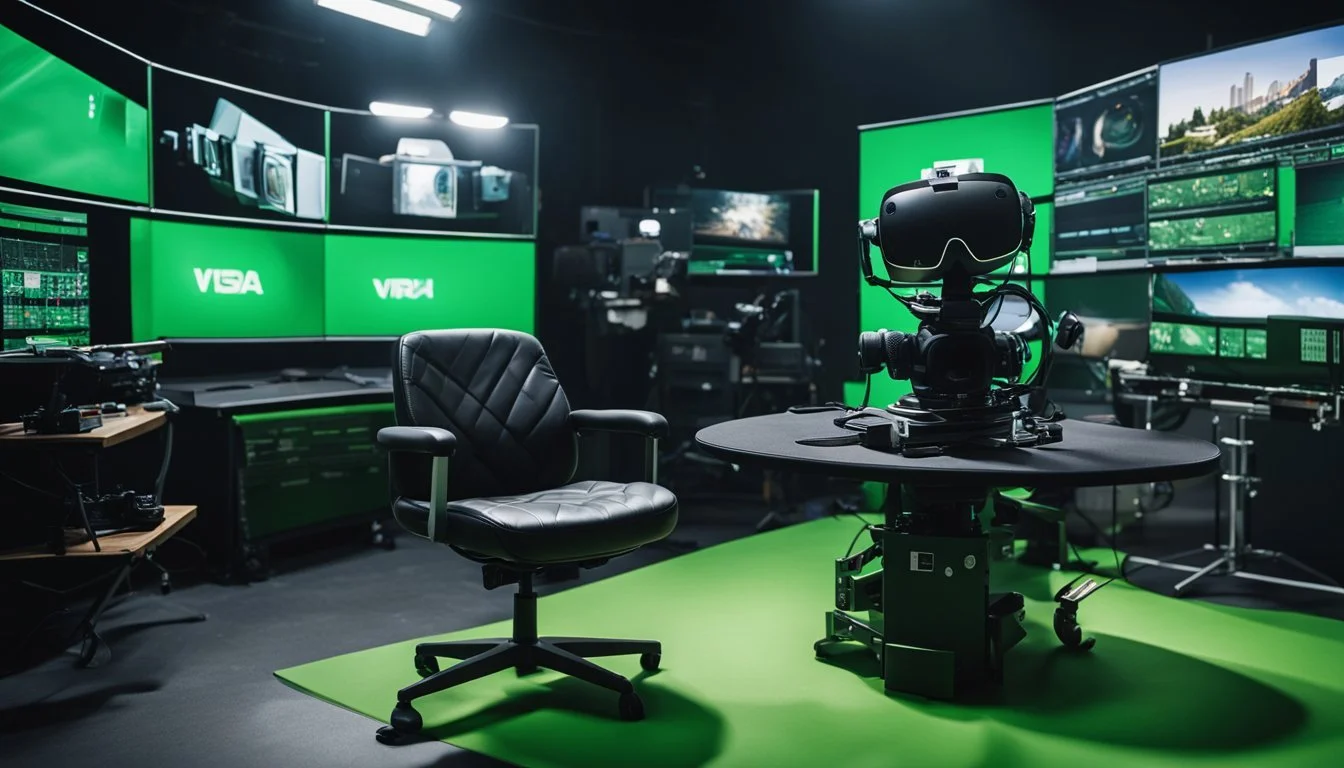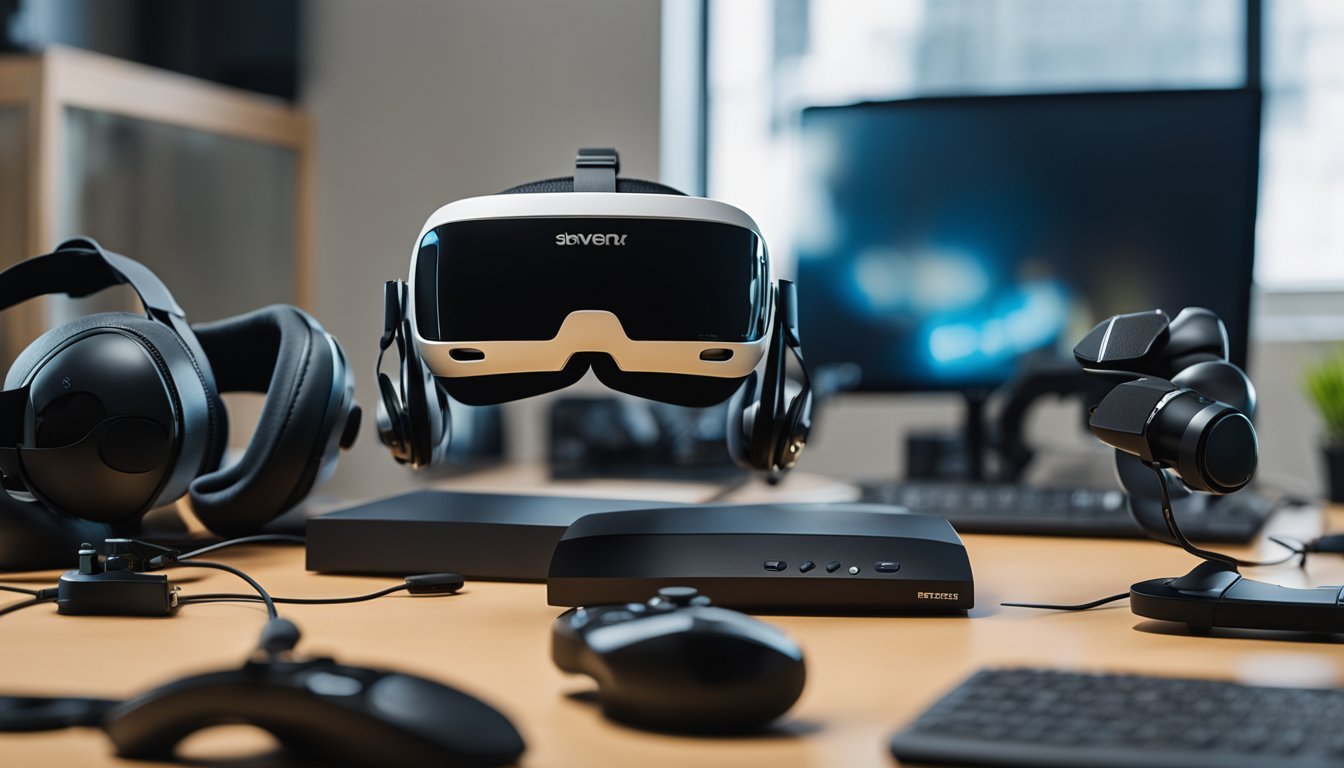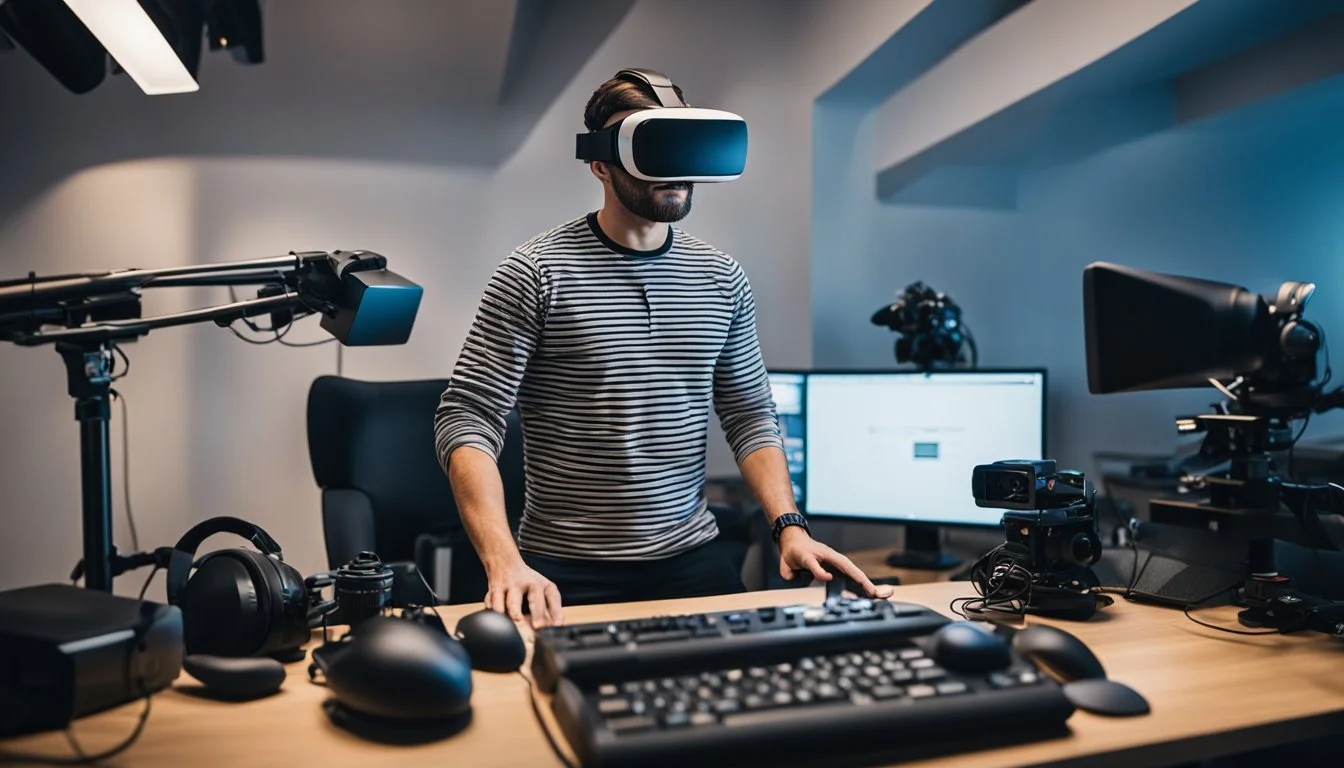Exploring the Intersection of Filmmaking and Virtual Reality
Innovation and Immersion in Modern Cinema
The intersection of filmmaking and virtual reality (VR) is reshaping the movie industry in profound ways. As VR technology advances, filmmakers are finding innovative methods to create immersive experiences that were previously unimaginable. Audiences can now step inside the story, experiencing a movie not just as passive viewers but as active participants. This transformative potential of VR in filmmaking opens new avenues for storytelling and engagement.
Virtual reality offers unique capabilities that traditional filmmaking can't match. For instance, VR can transport viewers to entirely virtual worlds, providing them with a 360-degree perspective and a sensory-rich experience. This level of immersion can heighten emotional responses and create a more meaningful connection to the narrative. Additionally, VR in filmmaking enables directors and actors to experiment with new forms of visual effects and interactions, pushing the boundaries of their creative processes.
Another revolutionary aspect of VR in filmmaking is its potential to democratize content creation. With more accessible VR tools and platforms, independent filmmakers now have the opportunity to produce high-quality, immersive content without the need for massive budgets. This shift not only diversifies the kinds of stories being told but also challenges the traditional gatekeepers of the film industry.
Evolution of Filmmaking with Virtual Reality Tech
The advent of virtual reality (VR) technology has significantly transformed filmmaking. VR allows filmmakers to create immersive environments that enhance the viewer's experience beyond traditional 2D screens.
Incorporating VR, directors can craft fully virtual worlds and control how viewers interact with the narrative. Interactive storytelling becomes possible, adding a new layer of engagement.
Filmmakers now use VR for pre-visualization. Directors and actors can explore virtual sets before actual filming. This capability offers a practical approach to visualize scenes and adjust them as needed.
Virtual production techniques also benefit from VR. Combining live-action footage with computer-generated environments in real-time allows for creative flexibility. It reduces the need for physical sets and extensive post-production work.
Another aspect is cinematic VR experiences, where viewers wear headsets to immerse themselves in the story. Unlike traditional films, these experiences make the audience an active part of the scene, enhancing emotional engagement.
Moreover, VR tech facilitates remote collaboration. Filmmakers from different parts of the world can work together in a shared virtual space, streamlining the production process.
The evolution of VR in filmmaking doesn't just alter the production phase. It shifts how audiences consume media. With VR theaters and home setups becoming more accessible, the reach and impact of films grow exponentially.
Enhanced visual effects (VFX) through VR also open new creative horizons, pushing the boundaries of what's possible in film. Using AR in conjunction with VR can provide real-time visualizations that help actors perform more naturally against digital backdrops.
Understanding Virtual Reality: Basics and Components
Virtual Reality (VR) creates immersive, computer-generated environments that users can interact with. This technology relies heavily on several key components to deliver its experience.
Head-Mounted Displays (HMDs) are essential for VR. These wearable devices provide visual and auditory feedback. Popular examples include the Oculus Rift and HTC Vive.
Motion Tracking is another critical component. It allows the VR system to monitor the user's movements and adjust the virtual environment accordingly. Common tracking devices include controllers, gloves, and room sensors.
VR content often involves 360-degree videos and interactive 3D models. These elements are created using specialized cameras and software. The environment is crafted to provide a seamless and engaging experience.
Audio in VR plays a vital role in immersion. Spatial audio technology helps create the illusion of sound coming from different directions and distances.
Computing Power is crucial for running VR applications smoothly. High-performance processors and graphic cards are often required to render the detailed environments in real-time.
VR also employs haptic feedback to simulate touch. This tactile feedback enhances the sense of presence in the virtual space. Devices like haptic gloves offer this feature.
Infiltrating various industries, VR goes beyond gaming. Fields like education, healthcare, and real estate use VR for training, simulations, and virtual tours.
Each element of VR works in harmony to provide an engaging and lifelike experience. Understanding these basics and components can offer insight into the capabilities and potential applications of Virtual Reality.
The Filmmaker's Toolkit: VR Hardware and Software
To create compelling virtual reality films, filmmakers need the right hardware and software.
VR Hardware
VR Headsets: Essential for viewing VR content. Top options include Oculus Quest 2 and HTC Vive Pro.
360-degree Cameras: Capture a full sphere of content. Popular choices are GoPro Max and Insta360 Pro 2.
VR Ready Computers: Required for processing and editing VR content. Look for powerful GPUs like NVIDIA RTX 3080.
VR Software
Editing Software: Adobe Premiere Pro and Final Cut Pro have integrated tools for editing 360-degree footage.
Game Engines: Unity and Unreal Engine are commonly used for creating interactive VR experiences.
Specialized Tools: Programs like Blender for 3D modeling and Adobe After Effects for visual effects can enhance VR projects.
Having access to the right tools is crucial. Equipping oneself with the appropriate gear can significantly impact the quality of VR films.
Storytelling in 360 Degrees
Storytelling in 360-degree virtual reality (VR) requires unique approaches to scriptwriting, directing viewer attention, and cinematography. These elements work in tandem to create an immersive and engaging experience for the audience.
Scriptwriting for VR
Scriptwriting for VR stands apart by emphasizing the user's perspective within the narrative. Traditional linear scripts don't translate directly. Instead, scripts must accommodate the possibility that viewers will look in multiple directions.
Narratives often play out in real-time and are highly dependent on the interaction between users and their surroundings. Writers must account for the spatial elements and movement within the story. The inclusion of real or fictional locations can greatly enhance the user’s sense of presence.
Directing Viewer Attention in VR
Directing viewer attention in a 360-degree environment poses unique challenges. Unlike traditional film, directors cannot rely on cuts and framed shots to guide the viewer's eye. Instead, directors use spatial audio cues, movement within the scene, and subtle visual indicators to draw attention to key elements.
For instance, a sudden sound from behind might prompt the viewer to turn around. Lighting also plays a critical role by highlighting important objects or characters. These techniques ensure that users don't miss critical parts of the story.
Cinematography Techniques in Virtual Spaces
Cinematography in VR involves positioning the camera to maximize the immersive experience. Traditional cameras focus frames, while 360-degree cameras capture everything around them. This necessitates the creation of seamless environments that are visually appealing from all angles.
Custom-built 360-cameras and other specialized equipment are often used to achieve this. In some cases, physical interaction with real objects is incorporated to enhance immersion. The surrounding environment must be meticulously crafted to avoid breaking the viewer's sense of immersion.
Post-Production in VR Filmmaking
Post-production in VR filmmaking encompasses distinct processes compared to traditional film, focusing on unique editing techniques and the incorporation of immersive visual effects. These elements are crucial for creating engaging virtual reality experiences.
Editing for VR
Editing for VR requires adapting traditional editing concepts to accommodate a 360-degree environment. Spatial audio plays a significant role in guiding the viewer's attention within this immersive space. Editors must meticulously synchronize audio cues with visual elements.
Transition techniques in VR also differ, as abrupt cuts can disorient viewers. Instead, smooth, guided transitions are often used. Shot selection considers the user’s point of view, ensuring that the virtual environment feels continuous and cohesive.
Effective VR editing demands high-res footage to maintain quality during manipulation. This ensures immersive experiences remain visually credible, elevating the overall viewer engagement.
Visual Effects in Virtual Reality
The use of visual effects (VFX) in VR is critical for enhancing realism and immersion. VR post-production integrates 3D modeling and CGI to create interactive and dynamic environments. VFX artists must ensure that digital assets interact naturally with the user’s movements and perspectives.
Implementing effects like particle systems and animated textures enhances the virtual experience. These effects create lifelike scenes, making interactions appear authentic.
Real-time rendering technologies are frequently employed to keep up with VR’s demand for high-fidelity graphics. This involves sophisticated software tools that manage complex computations and render scenes at smooth frame rates, contributing to an uninterrupted and seamless VR environment.
The Viewer's Experience: Immersion and Interaction
In the realm of virtual reality (VR) filmmaking, the viewer's experience is paramount. Immersion and interaction play crucial roles in shaping how audiences perceive and engage with VR content.
Virtual reality movies often use 360-degree moving images. These engage the viewer’s body and create highly immersive experiences by allowing the viewer’s physical position to define their perspective within the simulated space.
Interactive elements in VR films enhance this experience. For example, seeing one’s own virtual limbs responding to movements blends the physical and filmic realities. This creates a profound sense of presence that traditional 2D films cannot achieve.
VR Devices like the Meta Quest enable these immersive experiences. They not only expand the possibilities for viewing but also challenge traditional methods of cinematic storytelling.
Comparing VR with traditional 2D movies reveals notable differences. VR can affect both emotional and cognitive reactions more deeply, offering a more visceral and engaging experience.
Immersive storytelling in VR can transport viewers into narratives in ways that flat screens cannot. Embodying the viewer within the scene enhances interaction and makes the viewer an active participant rather than a passive observer.
Incorporating technologies such as haptic feedback and eye-tracking further deepens the sense of immersion and interaction.
This ability to create a surrounding, interactive environment opens new avenues for emotional and cognitive engagement, providing richer, more impactful storytelling. Immersion and interaction are not mere enhancements but fundamental to the viewer's experience in VR filmmaking.
Challenges and Solutions in VR Filmmaking
Virtual reality (VR) filmmaking introduces unique challenges and opportunities, particularly in areas of technology and user experience. Addressing these challenges can lead to more engaging and accessible VR films.
Technical Limitations and Advancements
VR filmmaking faces numerous technical hurdles. High-resolution visuals are essential to create an immersive experience, but they demand powerful hardware and extensive storage. Spatial audio, which enhances realism, also requires advanced sound design techniques.
Editing is another complex area. Traditional editing software may not adequately handle 360-degree footage. Filmmakers often need specialized tools and skills for VR content, making the production process more demanding.
Despite these challenges, technological advancements offer solutions. New software tools simplify 360-degree editing. Modern VR headsets deliver higher resolution and better performance, reducing the strain on production teams. Artificial Intelligence (AI) can assist in automating certain aspects, helping filmmakers focus on creativity.
User Comfort and Accessibility
Ensuring user comfort is critical in VR filmmaking. Motion sickness remains a significant issue, caused by a mismatch between visual inputs and physical movement. Filmmakers must consider frame rates and avoid rapid movements to minimize discomfort.
Accessibility is another challenge. VR headsets can be expensive, limiting access for a broader audience. Additionally, users with disabilities may find it difficult to engage with VR content.
Solutions include developing more affordable VR devices and incorporating features like adjustable controls and subtitles within VR environments. Creating content that is less likely to induce motion sickness, through smoother transitions and stable visuals, can make VR films more enjoyable for a wider audience.
Case Studies: Successful VR Films and Experiences
One notable example is the 70-minute VR feature film Calling. It was showcased at several prestigious festivals, including the 18th Beijing Film Academy Animation Awards and the Guangzhou Ultra Pictures International Film Festival. The director/editor's experiences highlighted significant insights in VR cinematography and editing.
The film Henry, created by Oculus Story Studio, tells the heartwarming story of a hedgehog longing for companionship. Its success is attributed to the emotional connection it establishes with the audience. Henry received an Emmy Award for Outstanding Original Interactive Program.
Another example is the VR adaptation of The Great C, based on Philip K. Dick's short story. Produced by Secret Location, the film blends traditional storytelling with immersive VR elements. It captures the tension and intrigue of the source material, engaging viewers in a captivating journey.
The VR film Le Musk, directed by A.R. Rahman, combines sensory elements with a compelling narrative. Viewers not only see and hear the story but also experience scents tied to the plot. This multi-sensory approach makes Le Musk a groundbreaking experience in VR storytelling.
Wolves in the Walls, based on Neil Gaiman's children's book, stands out for its interactive elements where viewers help the protagonist uncover mysteries. Created by Fable Studio, it emphasizes the potential of interactive storytelling in VR and has won awards for innovation.
The wide-ranging success of these VR films and experiences illustrates the growing potential of VR in the film industry. Each project demonstrates unique ways to engage and immerse audiences, marking significant strides in the intersection of filmmaking and virtual reality.
The Business of VR Filmmaking: Distribution and Monetization
VR filmmaking is transforming the cinematic landscape. The traditional methods of distribution and monetization are evolving to meet the demands of this dynamic medium.
Distribution Channels
VR films can be distributed through various platforms, including:
Dedicated VR apps: Apps designed specifically for VR experiences.
Streaming services: Some streaming services now support VR content.
VR headsets: Content directly available on devices like Oculus Rift, HTC Vive, and PlayStation VR.
Monetization Models
Different strategies are employed to monetize VR films:
Subscription-based services: A steady revenue stream through platforms offering VR content libraries.
Pay-per-view: Viewers pay for individual VR experiences.
Advertising: Incorporating ads within VR environments.
Sponsorships: Partnering with brands to create co-branded content.
Market Trends
The market for VR films is growing:
Increasing demand: More consumers are purchasing VR headsets.
Technological advancements: Continuous improvements in VR technology are making experiences more immersive.
Industry investment: Companies are investing heavily in VR content production.
Challenges
Despite the opportunities, there are notable challenges:
High production costs: Creating quality VR content is expensive.
Limited audience reach: The audience size is currently smaller compared to traditional films.
Technological barriers: Not everyone owns the necessary hardware to view VR films.
VR filmmaking offers groundbreaking potential. Effective distribution and monetization are critical for its sustainability and growth. With evolving strategies, it continues to capture the imagination of audiences and creators alike.
Future Trajectories: Trends and Innovations in VR Filmmaking
Virtual reality (VR) filmmaking is rapidly evolving. New technologies are emerging, creating immersive experiences for audiences.
1. Real-time Rendering
Real-time rendering allows filmmakers to see changes instantly. This enhances creativity and efficiency during production.
*2. Interactive Storytelling
Viewers can participate in the narrative, making choices that shape the story. This increases engagement and personalizes the experience.
VR headsets are becoming more advanced.
Features include higher resolution, better field of view, and improved head tracking.
AR integration enhances on-set experiences.
Actors and directors can visualize complex effects in real-time. This improves accuracy and performance.
Table: Key Innovations in VR Filmmaking
Trend Description Real-time Rendering Instant feedback during production Interactive Storytelling Viewers influence the storyline Advanced Headsets Higher resolution and better tracking AR Integration Real-time visualizations on set
Immersive Sound
Spatial audio is becoming vital. It places sounds in a 3D space, making the environment more realistic.
AI is being used to streamline various aspects of VR filmmaking.
From automating mundane tasks to enhancing post-production, AI is making the process more efficient.
The fusion of VR with traditional cinematic techniques is creating more engaging films.
This hybrid approach is expanding the possibilities of how stories are told and experienced.
The future of VR filmmaking looks promising.
Cutting-edge trends and innovations are pushing boundaries, making the medium more dynamic and captivating for audiences.



